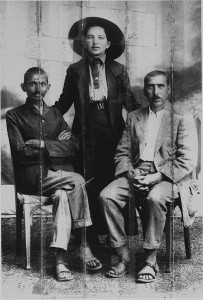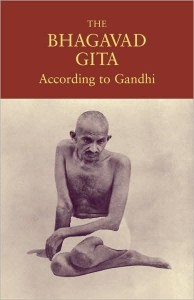In part 1 of this series, we talked about the conditions in a puppy mill. From a puppy mill, the young dogs go to pet stores. The conditions don’t get any better once they leave the mill. In Part 2, we’ll talk about what these dogs continue to suffer through, and why, under no circumstances, should you ever buy a dog from a pet store.
Pet store conditions
Ultimately, a pet store environment is really no better than that of the puppy mill. These dogs are first transported to the store in just about anything short of a rickshaw. No thought is given to temperature or sanitation en route to the store, and many go long, long ways. Some puppies don’t make the trip and die of dehydration, disease or hypo/hyperthermia along the way.
Assuming they get there alive, they’re then put in cages not unlike the ones they came from: wire on the bottom to make cleaning easier (and getting comfortable harder), too many dogs in one cage, and a lack of bedding or toys that provide crucial solace and enrichment (at a developmental stage that desperately needs these things). Pet store employees may mean well, but they’re often untrained in basic animal care and certainly lack any sort of knowledge of veterinary medicine.
They may not even have the opportunity to play or cuddle with the dogs unless they are taking them out for a prospective buyer. In fact, that’s not part of their job. They are retail workers, not animal professionals. So the care these dogs get is often palliative at best, and enough to keep them alive and appearing healthy, not enough to help them grow into physically and socially healthy animals.
Pet store diseases
Without exception (seriously, it’s very close to 100%, in my anecdotal experience), these dogs are sick. It starts at the puppy mill, but the stress and added pathogen exposure of a pet store, stocked with many other animals of other species and housed with dogs from other litters, combined with poor sanitation practices on the part of the workers means these dogs are sick at the store and will be sick when you take them home.
They don’t always look sick, though, especially to the untrained eye. Pet store animals are often dosed regularly with antibiotics or other medications that mask the symptoms of serious problems. A dog with diarrhea? You’ll rarely see one at the store, but when you take little Chanel home, you’ll be cleaning it up hourly. Why? The dogs are dosed with metronidazole, an anti-diarrheal and antibiotic that will typically not “treat” the underlying causes of loose stool in puppies, usually worms or poor nutrition, but sometimes something much more serious.
Vaccinations? Good luck. These dogs may have gotten an initial distemper-combo vaccination (typically a DHLPP), but at that age the vaccinations need to be administered every two weeks, and any shots given before six weeks are completely useless, because the animal has not yet developed the immune function to manufacture the appropriate antibodies. In addition, since they were likely taken from the bitch before they were fully weaned, they do not have the advantage of some of the basic immunities they acquire from her milk.
Again, they may have recieved a dewormer like pyrantel pamoate, but this needs to be administered biweekly as well, doesn’t eradicate all common parasites in puppies, and isn’t as effective without a fecal exam to ensure the dog is worm-free.
“Kennel cough,” or bordatella, an upper respiratory infection, is rampant. There is a vaccination for this, but it is rarely given in a pet store and is only marginally effective even in adults with a fully functioning immune system. Many more serious illnesses can be mistaken for kennel cough, as well. Treatment requires at least 7-10 days of antibiotics, and can worsen into pneumonia if neglected.
The most serious of all these problems: Parvovirus. Adult dogs, even unvaccinated ones, typically have a strong enough immune system to avoid this deadly disease. But puppies are very much at risk. Parvo can live outside a host for up to five months, and can only be killed on surfaces with very stringent sanitation and disinfectant protocols. The incubation period for the virus can be up to 14 days, which means that a “healthy” puppy can be in its home for quite a while before showing signs of the disease.
Symptoms are typically lethargy, vomiting and diarrhea (there is a particular smell and appearance to the stool that signifies parvo); if untreated, parvo has an 80% fatality rate. Furthermore, there is no “cure” for it; care is supportive and often requires round-the-clock IV fluids and attention until it has run its course. Unfortunately, many buyers do not realize what is wrong until it’s too late, and the cost of treatment is usually relatively high. Pet store puppies are the highest-risk group of all because of poor standards of care and lack of sanitation in the store.
The “AKC registered” myth
With all the recent attention paid to the puppy mill problem, pet stores have changed their marketing and labeling to mislead a potential buyer into thinking their dog is not from a puppy mill. The most common way they do this is by guaranteeing that the dog is American Kennel Club registered; i.e., from purebred lines. Sadly, the AKC is not in the business of ensuring that their registered dogs are anything but purebred. The AKC makes money from each dog registered with them, and a dog with “papers” does not mean anything. Many people are fooled into thinking the AKC stamp is some kind of “guarantee” or certification; it’s not. The dog may still have many, many problems.
The most important problem with the “purebred” myth: it does not guarantee a lack of congenital defects. Responsible breeders screen both their breeding stock and their offspring for potential problems such as hip dysplasia, luxating patellas, bleeding disorders and eye problems. Some breeds are more prone to these issues than others, and responsible breeders will certify with the OFA (Orthopedic Foundation for Animals) or CERF (Canine Eye Registry Foundation), in addition to providing proof that a dog is Von Willebrand’s or mitral-valve defect-free in their lineage. Very rarely is this the case with a pet store dog.
In addition, pet stores often carry “white” or other “exotic” animals, like pygmies. These pets are often the product of severe inbreeding or mutated animals. In some cases, the genes that produce them cause a host of medical and temperamental issues, and these dogs are considered inhumane “aberrations” in a gene pool. The best example of this is the albino or “Z factor” Doberman, all of whom are descended from a mother and son that were bred together to create a small line of badly damaged dogs. Buying one of these dogs is endorsing the very worst kind of eugenics.
Other misleading terms
Pet stores will often use the terms “rescue” or “adopt” when talking about their animals. Do not be fooled. Large chains like PetSmart and PetCo will often keep animals from reputable shelters and rescues in their stores, but they are not “for sale” and you will easily be able to find out what shelter they are from. Older dogs billed as “rescues” may be returns or breeding stock that have outlasted their usefulness. Every dog in a pet store is from a “private breeder”; this is just a term. A refrigerator can be a GE or a Sub-Zero, but they’re different, and all puppy mills are technically private breeders in that they are not a “company” making puppies in a factory.
Adopting and buying are not synonymous. If you are asked to pay any more than a couple hundred dollars (and you should easily be able to find out what that “adoption fee” goes toward), you aren’t adopting. If the pet isn’t spayed or neutered (and they can be as early as 6-8 weeks), and you’re not required to pay a deposit or sign a spay/neuter agreement, you’re not adopting.
The end result of getting a pet store dog
Once you get that dog home, you are virtually guaranteed to have housebreaking and training problems. Cash in your 401k for the vet bills. And, from a moral standpoint, the two thousand dollars that dog cost went right into the pocket of a puppy mill breeder to continue the cycle. No matter how good your intentions, do not buy a dog from a pet store. “Rescuing” that one little puppy from hell sadly endorses the practice.
So what now? In Part Three, I’ll discuss what we can do, from a practical and a legislative standpoint, to stop puppy mills from operating. We’ll talk about the USDA and what they do and don’t do to regulate the sale of dogs, as well as how to distinguish a reputable breeder from a puppy mill.







